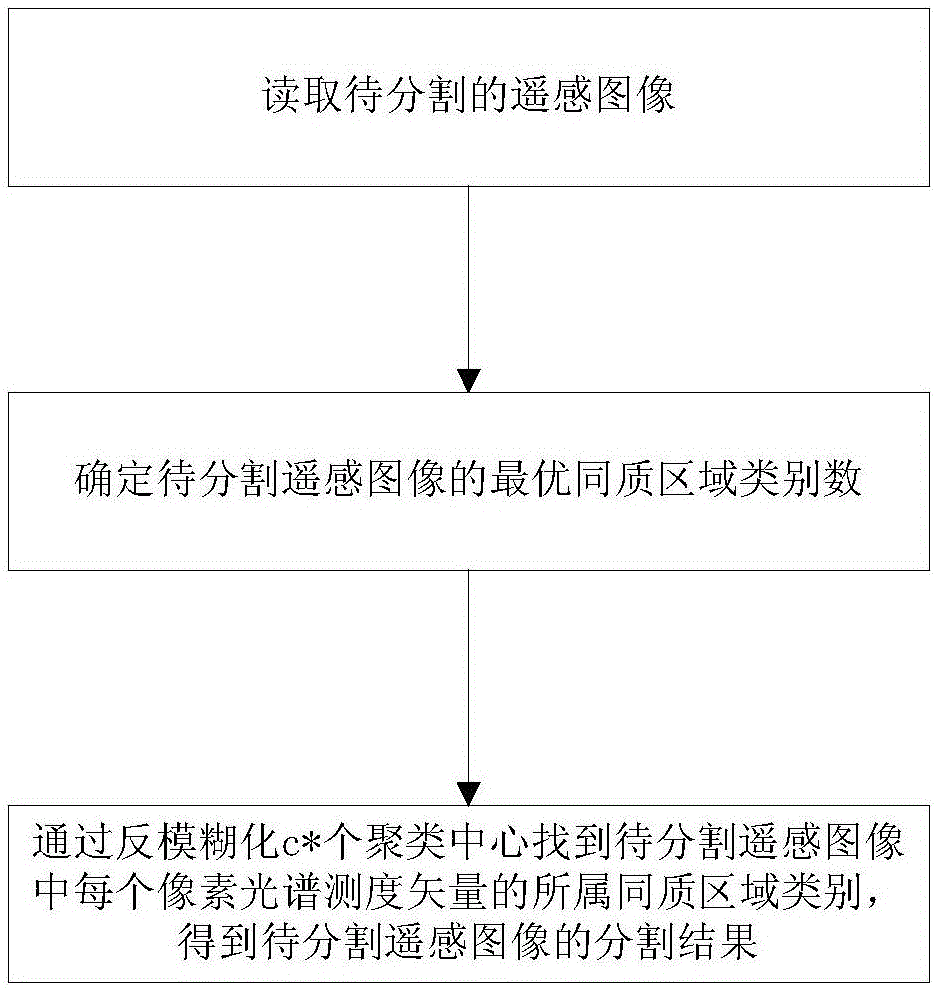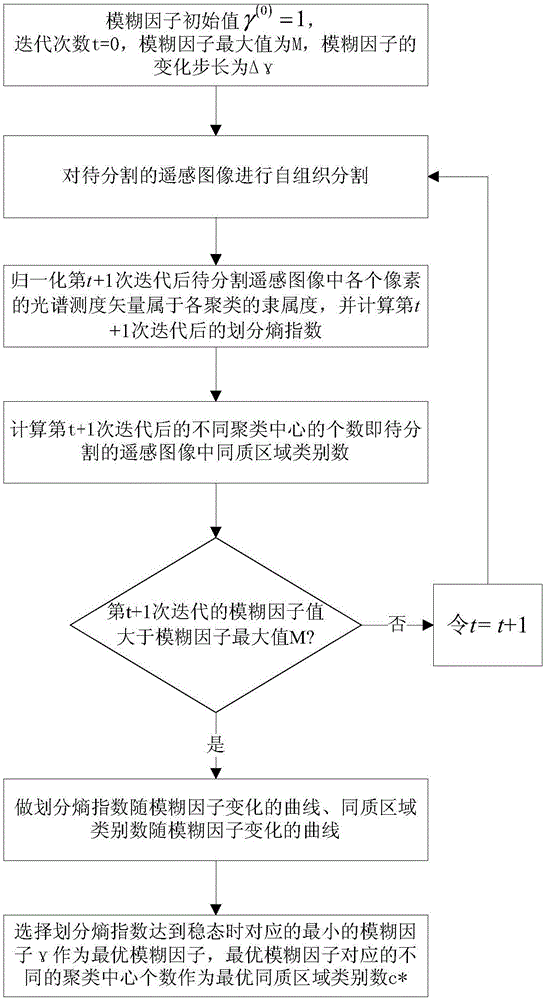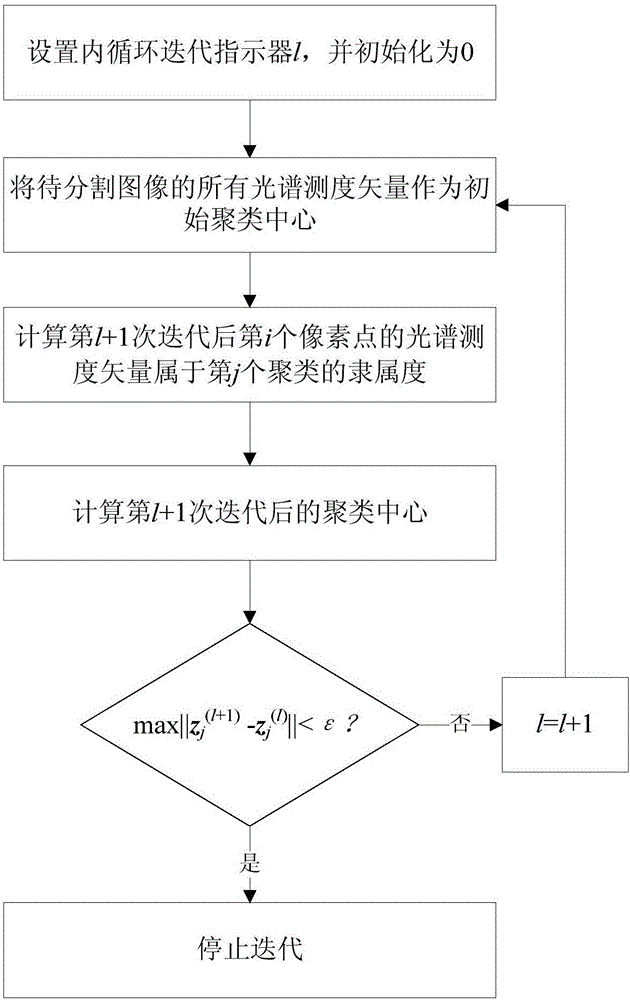Variable class remote sensing image segmentation method based on optimal fuzzy factor selection
A fuzzy factor and remote sensing image technology, applied in image analysis, image enhancement, image data processing, etc., can solve problems such as poor anti-noise performance and inability to achieve accurate image segmentation
- Summary
- Abstract
- Description
- Claims
- Application Information
AI Technical Summary
Problems solved by technology
Method used
Image
Examples
Embodiment Construction
[0039] The specific implementation manners of the present invention will be further described in detail below in conjunction with the accompanying drawings and embodiments. The following examples are used to illustrate the present invention, but are not intended to limit the scope of the present invention.
[0040] A variable class remote sensing image segmentation method based on optimal fuzzy factor selection, such as figure 1 shown, including the following steps:
[0041] Step 1: read the remote sensing image to be segmented, measure the spectral measurement vector of each pixel in the remote sensing image to be segmented, and represent the remote sensing image to be segmented as a set of spectral measurement vectors of each pixel;
[0042] In this embodiment, the remote sensing image to be segmented is defined as X={x i , i=1,...,n}, where i is the pixel index, n is the number of pixels, x i =(x i1 ,...,x id ) is the spectral measure vector of pixel i, and d is the nu...
PUM
 Login to View More
Login to View More Abstract
Description
Claims
Application Information
 Login to View More
Login to View More - R&D
- Intellectual Property
- Life Sciences
- Materials
- Tech Scout
- Unparalleled Data Quality
- Higher Quality Content
- 60% Fewer Hallucinations
Browse by: Latest US Patents, China's latest patents, Technical Efficacy Thesaurus, Application Domain, Technology Topic, Popular Technical Reports.
© 2025 PatSnap. All rights reserved.Legal|Privacy policy|Modern Slavery Act Transparency Statement|Sitemap|About US| Contact US: help@patsnap.com



